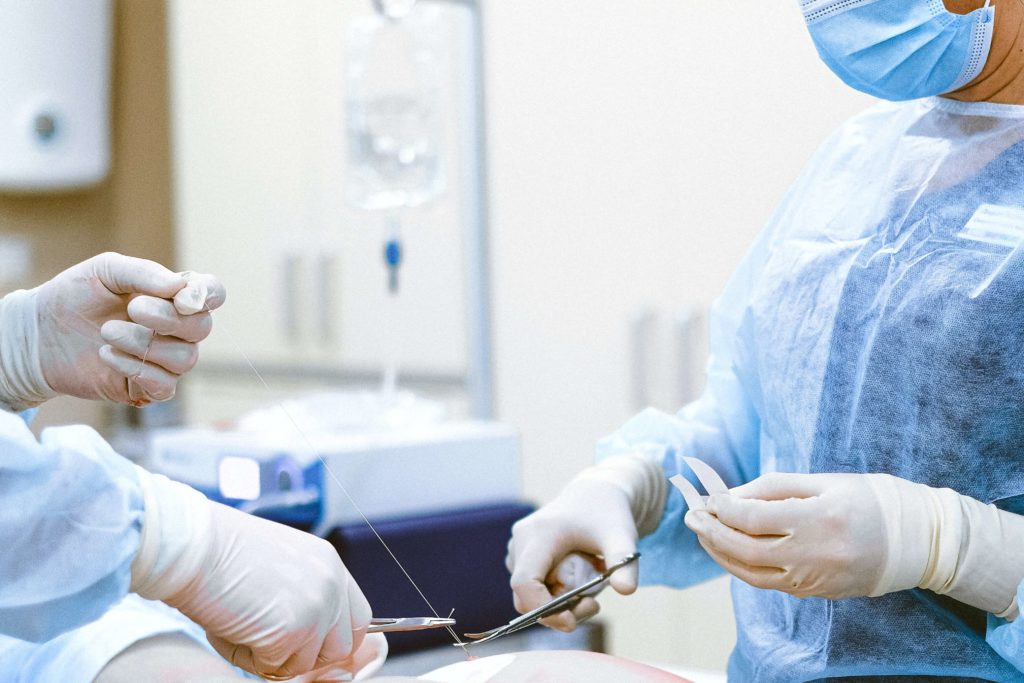
Jun 25, 2025 | Uncategorized
5 Key Reasons Why Men Should Prioritize Spinal Health
Spinal health is essential for everyone, but for men, maintaining a strong, healthy spine plays a cr...
Mon - Fri: 8:00 a.m. to 5:00 p.m
Back pain, especially lower back pain, is one of the most common causes of disability in the world. It has an estimated 9.4% global incidence, making it incredibly prevalent. In addition to this, back pain has very serious social, financial, and psychological impacts on sufferers. In fact, between 2000 and 2007, the number of adults in the United States living with chronic back pain went from 7.8 million to 12.8 million, an increase of 64% in 7 years. This is why surgeries to relieve back pain have also become more and more prevalent. However, surgery for back pain isn’t always successful, leading to conditions like failed back surgery syndrome.
But what is failed back surgery syndrome and what can be done to get relief for patients already suffering from a failed back surgery?
During the 10 years between 1998 and 2008, the annual number of lumbar fusions increased by 170.9%, going from 77,682 in 1998 to 210,407 in 2008. During these 10 years, the number of laminectomies also increased by 11.3%, going from 92,390 to 107,790. Although the number of surgeries has increased, that doesn’t mean that it has become foolproof. Surgery can provide significant relief to many patients, but in some cases, it fails or only provides temporary relief.
This is what causes failed back surgery syndrome (FBSS). It is defined by the International Association for the Study of Pain as “lumbar spinal pain of unknown origin either persisting despite surgical intervention or appearing after surgical intervention for spinal pain originally in the same topographical location.” It should also be noted that failed back surgery syndrome isn’t actually a syndrome, but simply something that occurs in some patients. However, for the sake of remaining consistent, this condition will continue to be referred to as failed back surgery syndrome for the remainder of this article.
Conservative estimates place the prevalence of FBSS at 20% of patients who undergo surgery, but some estimates are as high as 40%. In addition to this, a 2015 literature review of discectomies for lumbar disc herniation in patients under 70 found recurring back or leg pain in 5%-36% of patients within 2 years of their procedure.
Another study of 260 patients who underwent surgical laminectomy with or without fusion for lumbar spinal stenosis secondary to degenerative changes found that 29.2% of patients felt either no change in their pain or increased pain within 12 months of their procedure.

Every patient is different, and there may be a variety of factors that cause FBSS, including preoperative and postoperative risk factors. One of the most important factors in preventing FBSS is preoperative and it is determining the true cause of a patient’s condition in order to effectively treat it. Inaccurate diagnosis is one of the most common causes of failed back surgery syndrome and as many as 58% of FBSS cases are the result of undiagnosed lateral stenosis of the lower back.
In some cases, postoperative risk factors include patient behavior following their surgery. A study of 4,555 patients who underwent spine surgery for lumbar spinal stenosis found that patients who smoked were more likely to regularly use painkillers, have a worsened walking ability, and overall inferior quality of life 2 years after their surgery compared to nonsmokers. Smoking is also associated with an increase in other complications as well, such as impaired wound healing, increased rate of infections, and an increased rate of nonunion in patients who underwent spinal fusion.
Other factors that can result in failed back surgery syndrome include sacroiliac joint disease as a result of fusing the lumbar spine to the sacrum or the fusion of multiple segments. Increased degeneration of the spine following surgery can also lead to conditions such as facet arthropathy, potentially leading to new-onset foraminal stenosis.
Further, because back surgery alters the biomechanics of a patient’s back, patients may experience increased tension on their prevertebral and postvertebral muscles that directly control the movement of the spinal column. This can lead to stiffness, inflammation, spasms, and fatigue, all of which may also lead to pain felt in the paraspinal muscles. These muscles may also become traumatized during the surgical procedure itself because of intraoperative dissection and retraction. However, this can be avoided by performing spinal fusions that use an anterior approach as well as minimally invasive techniques.
There are a variety of other factors that can lead to failed back surgery syndrome not listed in this article as well.
In order to get relief from failed back surgery syndrome, your physician will need to take time to truly understand the cause of your condition in order to treat it effectively. At Biscup Spine, this is always Dr. Biscup’s first step with patients. During your consultation, he will take the time to discuss your medical history and your condition so that he can get a full understanding of the cause and how to best treat it with the least invasive option.
In addition to this, Dr. Biscup is a world-renowned pioneer in minimally invasive lumbar spine surgery techniques. This makes him uniquely qualified to treat failed back surgery syndrome with a less invasive technique than was originally used, greatly increasing his patients’ likelihood of success.
In addition to this, Dr. Biscup utilizes a variety of advanced diagnostic tools such as MRI scans, nerve blocks, and comprehensive blood tests. He uses these tools to create a personalized care plan for each patient’s unique condition. At Biscup Spine, our goal is to provide you with a personalized treatment plan with the tools and resources you need to ensure you’ll meet your health goals using the highest quality of clinical care and an unmatched standard of service excellence.
If you’re currently living with lower back pain caused by failed back surgery syndrome and have all but given up on finding relief, please don’t hesitate to call us at 1-800-533-7313 or contact us online today. We want to help you get the best outcome possible for the relief of your lower back pain and we pride ourselves on our proven ability to do so. We look forward to partnering with you on your successful journey to better health!

Spinal health is essential for everyone, but for men, maintaining a strong, healthy spine plays a cr...

This Father’s Day, skip the ties and sports gear—give Dad something that truly supports him, sta...

Summer 2025 is the perfect time to reset, recharge, and prioritize your health with practices that e...
©2025 Biscup Spine. All Rights Reserved. | Privacy Policy | Support by ITCare